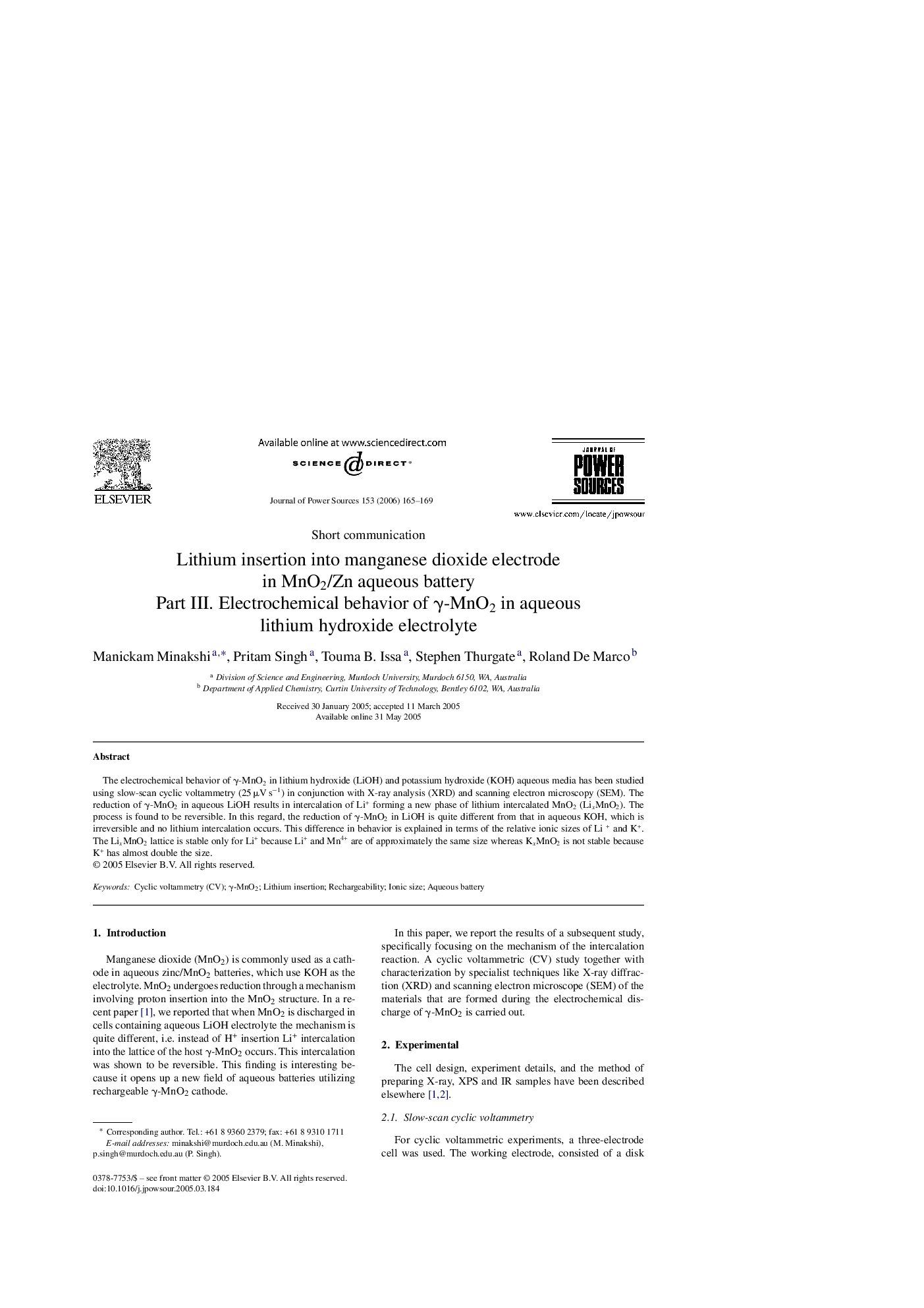| Article ID | Journal | Published Year | Pages | File Type |
|---|---|---|---|---|
| 1288045 | Journal of Power Sources | 2006 | 5 Pages |
The electrochemical behavior of γ-MnO2 in lithium hydroxide (LiOH) and potassium hydroxide (KOH) aqueous media has been studied using slow-scan cyclic voltammetry (25 μV s−1) in conjunction with X-ray analysis (XRD) and scanning electron microscopy (SEM). The reduction of γ-MnO2 in aqueous LiOH results in intercalation of Li+ forming a new phase of lithium intercalated MnO2 (LixMnO2). The process is found to be reversible. In this regard, the reduction of γ-MnO2 in LiOH is quite different from that in aqueous KOH, which is irreversible and no lithium intercalation occurs. This difference in behavior is explained in terms of the relative ionic sizes of Li + and K+. The LixMnO2 lattice is stable only for Li+ because Li+ and Mn4+ are of approximately the same size whereas KxMnO2 is not stable because K+ has almost double the size.
